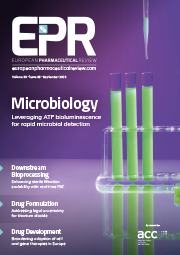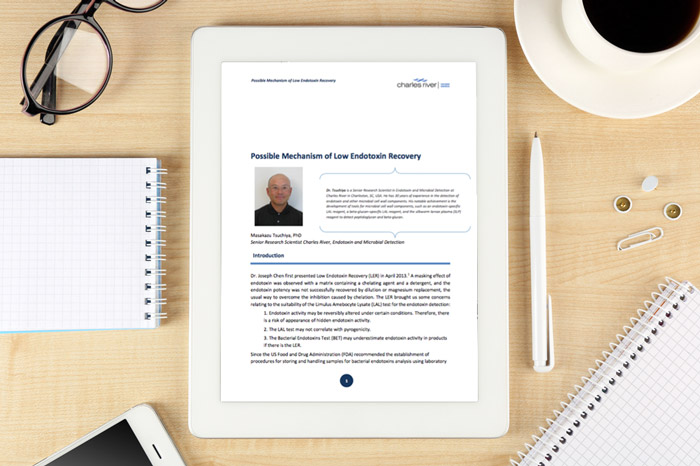Whitepaper: Possible Mechanism of Low Endotoxin Recovery
Posted: 26 October 2016 | Charles River | 2 comments
Since the risks of LER relate to the reversible biological activity change of endotoxin, it is worth reviewing previous papers on the aggregation of purified lipopolysaccharide (LPS) and its biological activity. The purpose of this article is to discuss the potency change of endotoxin in the LER by reviewing previous studies…
Dr. Joseph Chen first presented Low Endotoxin Recovery (LER) in April 2013. A masking effect of endotoxin was observed with a matrix containing a chelating agent and a detergent, and the endotoxin potency was not successfully recovered by dilution or magnesium replacement, the usual way to overcome the inhibition caused by chelation. The LER brought us some concerns relating to the suitability of the Limulus Amebocyte Lysate (LAL) test for the endotoxin detection:
- Endotoxin activity may be reversibly altered under certain conditions. Therefore, there is a risk of appearance of hidden endotoxin activity.
- The LAL test may not correlate with pyrogenicity.
- The Bacterial Endotoxins Test (BET) may underestimate endotoxin activity in products if there is the LER.
Since the US Food and Drug Administration (FDA) recommended the establishment of procedures for storing and handling samples for bacterial endotoxins analysis using laboratory data in Question #3 of the FDA Guidance, a hold-time study is considered to be necessary for each product. Even though FDA pointed out the possibility of a difference in reactivity between purified bacterial endotoxin and native sources of endotoxin, a purified endotoxin, such as control standard endotoxin (CSE) and US Reference Standard Endotoxin (RSE), is usually used for the hold-time study. CSE and RSE are prepared from purified lipopolysaccharide (LPS) and additives. The LER is a potency change of purified LPS by a chelating agent and a detergent. The mechanism of the LER is not fully elucidated, but it is anticipated that the removal of divalent cations by a chelating agent and dispersing LPS by a detergent are involved in the LER
LPS is an amphipathic molecule and exists as aggregates in water. Since the degree of LPS aggregation is one of the factors determining the biological activities of endotoxin, many researchers reported the relationship between the morphological structures and the biological activities of LPS. Since the risks of the LER relate to the reversible biological activity change of endotoxin, it is worth reviewing previous papers on the aggregation of LPS and its biological activity. The purpose of this article is to discuss the potency change of endotoxin in the LER by reviewing previous studies.
This whitepaper is restricted - login or subscribe free to access


Why subscribe? Join our growing community of thousands of industry professionals and gain access to:
- bi-monthly issues in print and/or digital format
- case studies, whitepapers, webinars and industry-leading content
- breaking news and features
- our extensive online archive of thousands of articles and years of past issues
- ...And it's all free!
Click here to Subscribe today Login here







I Would like to read this interesting article!
Thanks for your comment. If you subscribe to the site you can unlock all the restricted content for free! Plus you’ll get loads more.